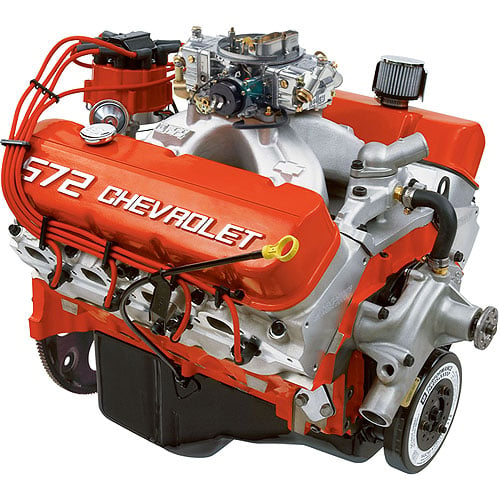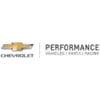Chevrolet Performance ZZ572/620 Deluxe Engine, 621HP @ 5400 RPM
809-19331583







Items You Need
| Ratings |
|---|
| Price |
| Brand |
Engine Break-In Procedure
Use conventional or break-in oil (non-synthetic) for the first oil change, be sure to check the oil level in the engine and prime the oil system with an engine priming tool.
Engines with flat tappet hydraulic cams only - Run the engine between 2,000 and 2,500 RPM's, with no-load on the engine for the first 30 minutes. This is critical to break in the camshaft.
Drive the vehicle with varying speeds and loads on the engine for the first 30 miles. Be sure not to use a lot of throttle or high RPM. Run five or six medium-throttle accelerations to about 3000 RPM (40 to 50 MPH), then letting off in gear and coasting back down to 20 MPH. Run a couple of hard throttle accelerations up to about 5000 RPM (55 to 60 MPH), then letting off in gear and coasting back down to 20 MPH.
Let the engine cool and change the oil and filter using conventional (non-synthetic) oil and check coolant level, top off if necessary. Drive the next 500 miles normally, without high RPM's (below 5000 RPM), hard use, or extended periods of high loading. Change the oil and oil filter again using conventional (non-synthetic) oil. Keep an eye on oil level during the first thousand or so miles.
It would be suitable to use synthetic motor oil after the second recommended oil change and mileage accumulation.
Emissions Note:
This part is only legal for sale and use on Uncontrolled (Non-Emissions Controlled) Vehicles or on vehicles used solely for the purposes of closed competition racing.
CLICK THIS LINK FOR IMPORTANT CARB & EPA EMISSIONS INFORMATION ABOUT THIS PART
Specifications:
Can this engine be used in a 1977 Camaro Sport Coupe?
will this work in 1967 chevelle SS. no computer have 4speed rock crusher transmission
Does engine come with roller cam ? Thanks
Will the oil pan clear on a 1966 or 1967 Chevelle
Can the block be purchased with 12 to 1 Pistons
I have a 1972 corvette will the old 454 headers bolt on
Will engine clearance be okay on a factory 1967 chevelle ss hood, or will a cowl hood be needed for clearance?
Motor Vehicles
WARNING: Motor vehicles contain fuel, oils and fluids, battery posts, terminals and related accessories which contain lead and lead compounds and other chemicals known to the State of California to cause cancer, birth defects and other reproductive harm. These chemicals are found in vehicles, vehicle parts and accessories, both new and as replacements. When being serviced, these vehicles generate used oil, waste fluids, grease, fumes and particulates, all known to the State of California to cause cancer, birth defects, and reproductive harm.
Tools:
WARNING: Some dust created by power sanding, sawing, grinding, drilling, and other construction activities contains chemicals known to the State of California to cause cancer and birth defects or other reproductive harm. Some examples of these chemicals are: lead from lead-based paints, crystalline silica from bricks and cement and other masonry products, and arsenic and chromium from chemically treated lumber. Your risk from exposure to these chemicals varies, depending on how often you do this type of work. To reduce your exposure, work in a well-ventilated area and with approved safety equipment, such as dust masks that are specially designed to filter out microscopic particles.
Electrical Cords
WARNING: The wires of these products contain chemicals known to the State of California to cause cancer and birth defects or other reproductive harm. Wash hands after handling.

